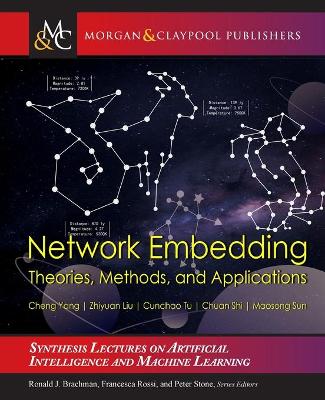Synthesis Lectures on Artificial Intelligence and Machine Learning
2 total works
Graphs are useful data structures in complex real-life applications such as modeling physical systems, learning molecular fingerprints, controlling traffic networks, and recommending friends in social networks.
However, these tasks require dealing with non-Euclidean graph data that contains rich relational information between elements and cannot be well handled by traditional deep learning models (e.g., convolutional neural networks (CNNs) or recurrent neural networks (RNNs)). Nodes in graphs usually contain useful feature information that cannot be well addressed in most unsupervised representation learning methods (e.g., network embedding methods). Graph neural networks (GNNs) are proposed to combine the feature information and the graph structure to learn better representations on graphs via feature propagation and aggregation. Due to its convincing performance and high interpretability, GNN has recently become a widely applied graph analysis tool.
This book provides a comprehensive introduction to the basic concepts, models, and applications of graph neural networks. It starts with the introduction of the vanilla GNN model. Then several variants of the vanilla model are introduced such as graph convolutional networks, graph recurrent networks, graph attention networks, graph residual networks, and several general frameworks. Variants for different graph types and advanced training methods are also included. As for the applications of GNNs, the book categorizes them into structural, non-structural, and other scenarios, and then it introduces several typical models on solving these tasks. Finally, the closing chapters provide GNN open resources and the outlook of several future directions.
However, these tasks require dealing with non-Euclidean graph data that contains rich relational information between elements and cannot be well handled by traditional deep learning models (e.g., convolutional neural networks (CNNs) or recurrent neural networks (RNNs)). Nodes in graphs usually contain useful feature information that cannot be well addressed in most unsupervised representation learning methods (e.g., network embedding methods). Graph neural networks (GNNs) are proposed to combine the feature information and the graph structure to learn better representations on graphs via feature propagation and aggregation. Due to its convincing performance and high interpretability, GNN has recently become a widely applied graph analysis tool.
This book provides a comprehensive introduction to the basic concepts, models, and applications of graph neural networks. It starts with the introduction of the vanilla GNN model. Then several variants of the vanilla model are introduced such as graph convolutional networks, graph recurrent networks, graph attention networks, graph residual networks, and several general frameworks. Variants for different graph types and advanced training methods are also included. As for the applications of GNNs, the book categorizes them into structural, non-structural, and other scenarios, and then it introduces several typical models on solving these tasks. Finally, the closing chapters provide GNN open resources and the outlook of several future directions.
Network Embedding
by Cheng Yang, Zhiyuan Liu, Cunchao Tu, Chuan Shi, and Maosong Sun
Published 25 March 2021
This is a comprehensive introduction to the basic concepts, models, and applications of network representation learning (NRL) and the background and rise of network embeddings (NE).
It introduces the development of NE techniques by presenting several representative methods on general graphs, as well as a unified NE framework based on matrix factorization. Afterward, it presents the variants of NE with additional information: NE for graphs with node attributes/contents/labels; and the variants with different characteristics: NE for community-structured/large-scale/heterogeneous graphs. Further, the book introduces different applications of NE such as recommendation and information diffusion prediction. Finally, the book concludes the methods and applications and looks forward to the future directions.
Many machine learning algorithms require real-valued feature vectors of data instances as inputs. By projecting data into vector spaces, representation learning techniques have achieved promising performance in many areas such as computer vision and natural language processing. There is also a need to learn representations for discrete relational data, namely networks or graphs. Network Embedding (NE) aims at learning vector representations for each node or vertex in a network to encode the topologic structure. Due to its convincing performance and efficiency, NE has been widely applied in many network applications such as node classification and link prediction.
It introduces the development of NE techniques by presenting several representative methods on general graphs, as well as a unified NE framework based on matrix factorization. Afterward, it presents the variants of NE with additional information: NE for graphs with node attributes/contents/labels; and the variants with different characteristics: NE for community-structured/large-scale/heterogeneous graphs. Further, the book introduces different applications of NE such as recommendation and information diffusion prediction. Finally, the book concludes the methods and applications and looks forward to the future directions.
Many machine learning algorithms require real-valued feature vectors of data instances as inputs. By projecting data into vector spaces, representation learning techniques have achieved promising performance in many areas such as computer vision and natural language processing. There is also a need to learn representations for discrete relational data, namely networks or graphs. Network Embedding (NE) aims at learning vector representations for each node or vertex in a network to encode the topologic structure. Due to its convincing performance and efficiency, NE has been widely applied in many network applications such as node classification and link prediction.

